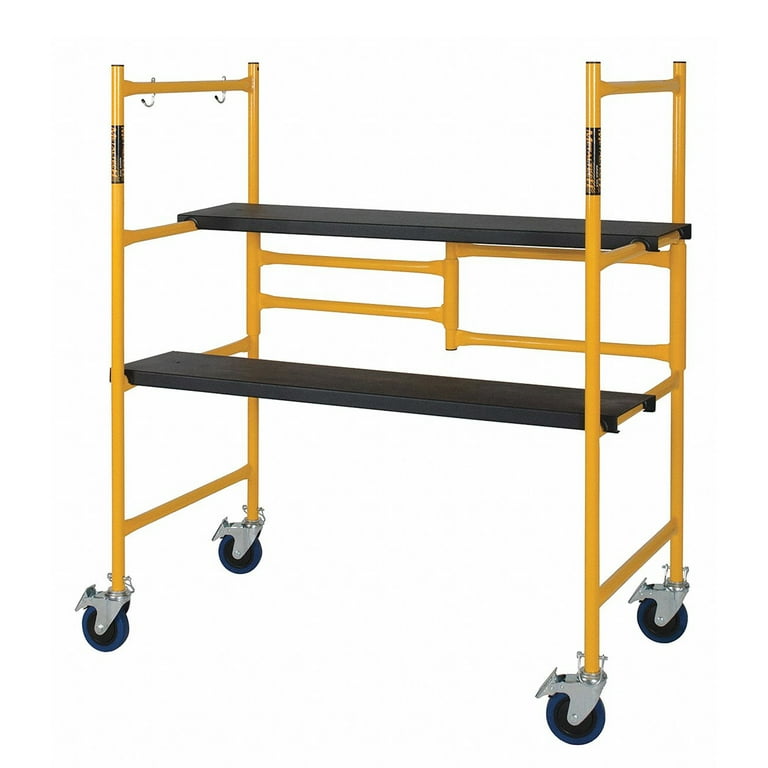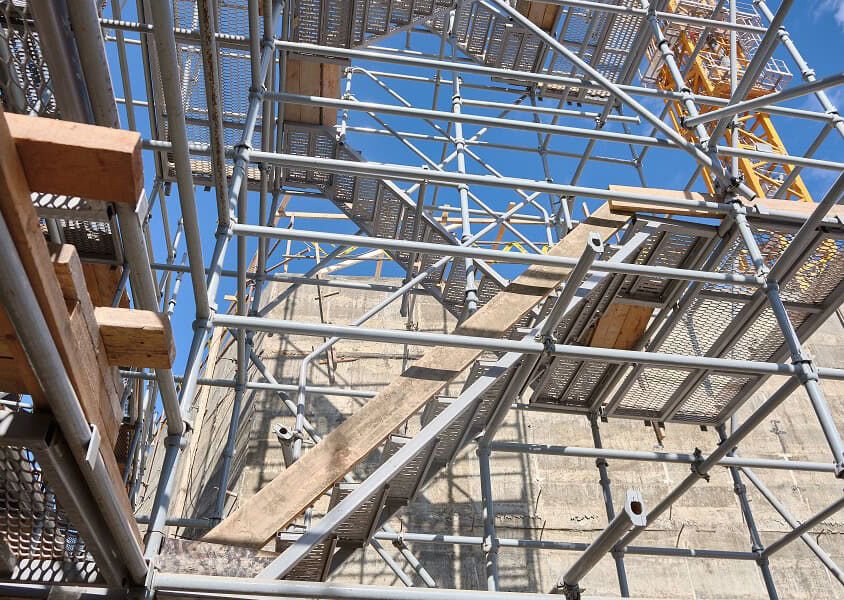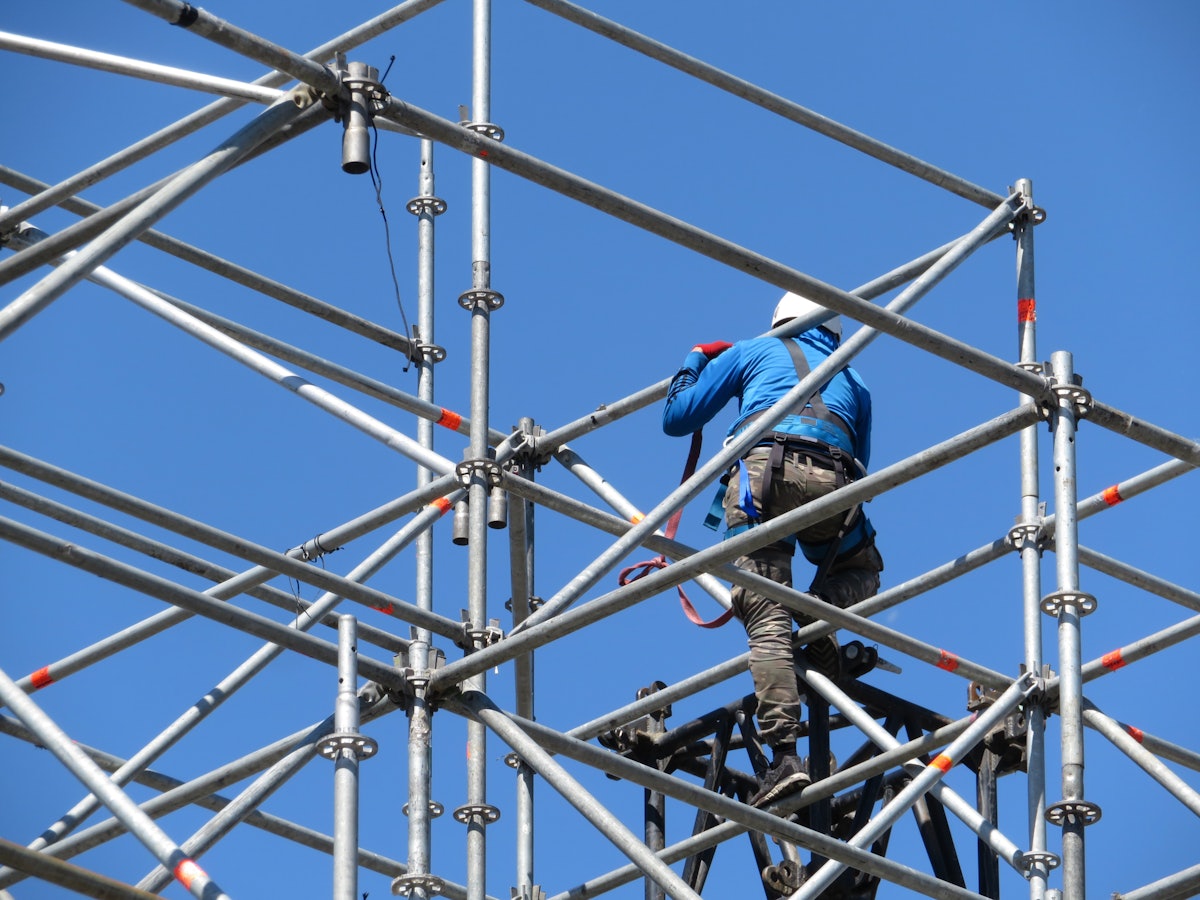Quality Scaffolding Surrey for Both Residential and Commercial Projects
Quality Scaffolding Surrey for Both Residential and Commercial Projects
Blog Article
Discovering the Different Kinds of Scaffolding Used in Building And Construction Tasks
The building sector depends heavily on different sorts of scaffolding to meet particular project requirements, each offering distinct benefits and applications. Traditional framework scaffolding offers a strong structure for basic jobs, while put on hold scaffolding is essential for deal with high-rise structures. Various other options, such as system and rolling scaffolding, accommodate performance and flexibility, specifically. The cantilever alternative confirms very useful in city settings where room is constrained. Recognizing the subtleties of these scaffolding kinds is essential for maximizing security and efficiency on building and construction websites, triggering a more detailed examination of their special attributes and applications.

Conventional Framework Scaffolding
Standard framework scaffolding is just one of one of the most commonly used approaches in the building and construction sector as a result of its robustness and adaptability. This system contains vertical and horizontal frameworks that are put together to create a stable platform for materials and workers. The main components consist of upright articles, horizontal ledgers, and diagonal braces, which with each other provide a strong framework that can support substantial lots.
One of the vital advantages of traditional framework scaffolding is its adaptability to numerous building tasks, ranging from residential structures to big business structures. The modular layout permits simple assembly and disassembly, making it reliable for both long-term and temporary tasks. Furthermore, the system can be tailored in height and size, suiting different building layouts and site conditions.
Safety and security is critical in scaffolding applications, and typical framework systems are equipped with guardrails and toe boards to stop falls and make certain worker protection. Normal evaluations and adherence to safety and security laws are essential in preserving the stability of the scaffold (Scaffolding). On the whole, traditional frame scaffolding continues to be a fundamental selection in the construction sector, giving a reliable platform for labor and enhancing overall project effectiveness

Suspended Scaffolding
Suspended scaffolding supplies a special option for construction projects that need access to raised surface areas, particularly in scenarios where typical framework scaffolding may be impractical. This kind of scaffolding is usually put on hold from the roofing system or top levels of a structure, using a system of platforms, ropes, and sheaves to produce a working area that can be changed to numerous elevations.
Among the primary benefits of suspended scaffolding is its adaptability. It can be easily rearranged or lowered to fit changes in building demands, making it perfect for jobs such as window setup, façade job, and upkeep on high-rise buildings. Furthermore, the marginal footprint of suspended scaffolding allows for far better use of ground room in urban atmospheres, where space is commonly limited.
Safety is a vital factor to consider in the usage of put on hold scaffolding. Generally, put on hold scaffolding supplies a efficient and effective option for accessing hard-to-reach areas in various construction scenarios, improving both efficiency and safety on site.
System Scaffolding
System scaffolding, typically considered as a modern-day option in the scaffolding market, consists of pre-engineered components that can be swiftly assembled and adapted for different construction projects. Scaffolding. This sort of scaffolding is identified by its modular layout, which enables for adaptability and effectiveness on job sites, suiting various heights and structural requirements
Generally made from high-strength steel or light weight aluminum, system scaffolding supplies improved resilience and security. The components include upright messages, horizontal journals, and diagonal dental braces, which adjoin firmly, making sure a durable framework. The layout commonly incorporates standard installations, simplifying assembly and disassembly procedures, consequently lowering labor time and prices.

Rolling Scaffolding
Moving scaffolding is a flexible option to standard set scaffolding, made for flexibility and convenience of usage on building and construction websites. This kind of scaffolding contains a platform supported by frames with wheels, permitting employees to quickly move it as needed. The mobility attribute significantly boosts performance, as it minimizes downtime connected with constructing and disassembling fixed scaffolding.
Usually constructed from light-weight materials such as aluminum or steel, rolling scaffolding supplies a strong yet portable remedy for jobs requiring constant repositioning - Scaffolding. It is especially advantageous in jobs such as painting, drywall installment, and electric work, where accessibility to numerous heights and areas is necessary
Safety is paramount in rolling scaffolding layout, with functions such as securing wheels to stop unintentional activity when in operation, and guardrails to protect workers from falls. click to read Additionally, many designs are adjustable in height, accommodating numerous task demands.
Cantilever Scaffolding

The layout of cantilever scaffolding generally includes utilizing arms or braces anchored to a building or structure, allowing the platform to prolong external securely. Safety and security is critical; therefore, these scaffolds have to be engineered to stand up to environmental problems and different tons. Regular evaluation and upkeep are necessary to ensure structural honesty and worker safety and security.
Cantilever scaffolding is preferred for its convenience and efficient use room, making it a popular choice in city atmospheres where space restraints are typical. Moreover, it helps with simpler accessibility to high elevations, inevitably adding to the overall effectiveness of construction tasks. Just like all scaffolding types, correct training and adherence to security standards are crucial for workers utilizing cantilever scaffolding.
Verdict
Standard structure scaffolding provides stability, while suspended scaffolding offers flexibility for elevated tasks. System scaffolding assists in fast setting up, and rolling scaffolding boosts flexibility for differing job settings.
Typical structure scaffolding gives a sturdy foundation for basic tasks, while suspended scaffolding is vital for work on high-rise structures.Rolling scaffolding is a flexible option to standard set scaffolding, developed for mobility and simplicity of usage on building websites. As with all scaffolding types, proper training and adherence to safety standards are important for workers utilizing cantilever scaffolding.
Traditional framework scaffolding provides security, while suspended scaffolding provides convenience for elevated tasks. System scaffolding promotes fast assembly, and rolling description scaffolding boosts wheelchair for differing work settings.
Report this page